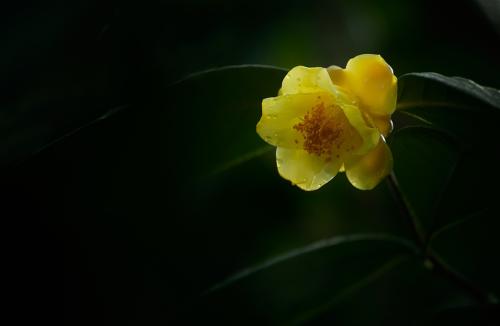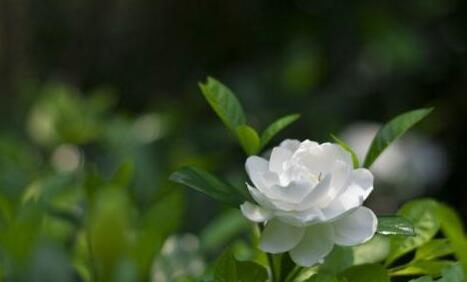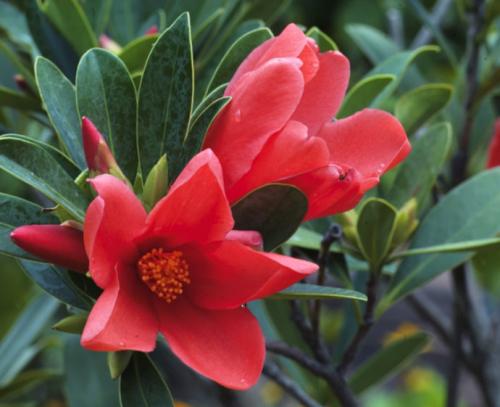Propagation mode of camellia
1. Cutting
During the growing period, the well-developed branches were selected and prepared for a series of cuttings, and finally inserted into the soil to wait for their roots.
2. Docking
Choose a suitable plant as the rootstock, first plant the rootstock into the soil, then closely fit the camellias and rootstocks, wrap them with plastic film, and maintain them carefully.
3. Leaf cutting
Leaf insertion is best carried out in the rainy season, and one-year-old leaves are used as leaf insertion material. After inserting into the soil, press the soil, pour enough water, then put it in a cool and ventilated place, and then wait for it to take root.

Well, that's the end of today's content. I hope the editor's content can help you. Thank you for your reading!
Propagation mode of camellia 1. Cutting
During the growing period, the branches with good growth were selected and prepared for a series of cuttings, and finally inserted into the soil to wait for their roots.
2. Docking
Choose a suitable plant as the rootstock, first plant the rootstock into the soil, then closely fit the camellias and rootstocks, wrap them with plastic film, and maintain them carefully.
3. Leaf cutting
Leaf insertion is best carried out in the rainy season, and one-year-old leaves are used as leaf insertion material. Insert about 2 cm into the soil, press the soil, pour enough water, then put it in a cool and ventilated place, and wait for it to take root.
All right, these are the contents of the editor today. I hope the breeding methods and breeding methods provided by the editor can be helpful to you. Thank you for your reading!
Propagation mode and disease and pest control of camellia
As for the breeding methods and pest control of camellias, do you know that today the editor will take you to find out.
There are many propagation methods of camellia, both sexual reproduction and asexual reproduction can be used, among which cutting and grafting are the most common.
Cuttage
This method is the most simple and convenient, and the most suitable cutting time is in September, and it can also be in spring. Select the well-growing, semi-lignified branches, remove the basal leaves, retain the upper 3 leaves, cut them into an oblique orifice with a sharp knife, immediately soak the incision in 200-500ppm indolebutyric acid for 5-15 minutes, then insert it into a sand basin or vermiculite basin after drying, water the wound for about 40 days, and take root for about 60 days. The cuttings treated with hormone took root 2-3 months earlier than those without hormone. Vermiculite is used as a slotting bed, and it takes root much faster than a sand bed.
Lean on the connection
Choose appropriate varieties such as tea or Camellia oleifera as rootstocks to pick up valuable camellias. The connecting time is usually between Ching Ming Festival and the Mid-Autumn Festival. First plant the rootstock in the flowerpot, cut off about half of the joint with a knife, the incision should be smooth, then make the cut of both sides closely fit, wrap it with plastic film, drench the rootstock twice a day, and heal after 60 days. At that time, it can be cut off and planted in the shade of trees to avoid direct sunlight. In February of the following year, the tail of the rootstock was cut off with a knife and then planted.
Leaf cuttings
The leaf cuttage method is generally used for camellia propagation, but some valuable varieties are also used because of the limitation of the source of branches or considering that the tree shape will be affected after sampling. Using mountain mud as the cutting substrate, it can be mixed with 1 stroke 3 river sand to facilitate ventilation and drainage, and the matrix is stored in a tile basin, and then cut in the basin. Leaf insertion is best carried out in the rainy season, take one-year-old leaves as leaf insertion material, too old is not easy to root, too young and easy to rot. Insert about 2 cm into the soil, press the soil after insertion, pour enough water, and then put it in a cool and ventilated place. Generally, it can take root in 3 months, and it can sprout and branch in the next spring.
High insertion
The most important feature of the high-altitude cutting method is that it can give new life to all the weak twigs that should have been trimmed off from the camellias. And this method has the advantages of high survival rate, quick rejuvenation and early flowering. The method is as follows: the thin branches that need to be pruned are girdled in an appropriate position. (generally, the upper part can be left into 15-25 cm branches) the girdling length can be between 5-8 mm, and the plastic film of appropriate size is bound. The film is filled with peat soil or rotten leaf soil that has been sterilized, and after 7-10 days, the lower part of the plastic film is peeled again for 5-8 mm, which is called double-ring peeling high insertion method.
Tree grafting
Camellia is a plant that is difficult to survive. There are a variety of propagation methods of camellia, among which grafting is the most commonly used. Grafting propagation of camellias has many advantages: it can maintain the excellent characters of varieties; it can accelerate plant growth, make it take shape quickly, and can be produced on a large scale; saving panicles, especially for those rare varieties with few sources of panicles, is particularly important; Camellia grafting technology: the grafting time is between June and July, when the new shoot leaves of camellia scion have been unfolded, and the temperature is high, the grafting wound heals quickly and the survival rate is high. The grafting method is the cutting method in the grafting method. Due to the high position of grafting, it is often called "high grafting head".
Disease and pest control of camellia
The main diseases of camellias are ring streak, anthracnose, shoot blight, leaf spot, bituminous coal and so on. The main control agents are as follows: carbendazim 800 times, carbendazim 500 times, chlorothalonil 800 times and carbendazim 800 times regularly. Attention should be paid to the control of Botrytis cinerea and flower blight before flowering.
The main pests of camellias are red spiders, aphids, scale insects, leaf rollers and bridge worms. The main control agents are cypermethrin 15ml + isocarbophos 20mL or monocrotophos 25mL mixed with 30 jin water spray.
The above is the knowledge about the propagation methods and pest control of camellias.
- Prev

Indoor Culture method of Camellia
1. Light temperature camellias like the environment with adequate light and ventilation, and are not resistant to high temperature and cold, so when breeding, we must pay attention to sufficient light and temperature regulation, and do not put them on the balcony. 2. Water management camellias like a humid environment and are resistant to semi-shade, so you can water a little more when watering.
- Next

Steps of Camellia Cuttage
Step 1 choose sandy soil with loose soil and good drainage, usually a mixture of perlite and coarse sand or vermiculite. Step 2: select the well-developed branches, usually the twigs are longer and the thick branches are shorter, and then cut them along the cutting point.
Related
- Fuxing push coffee new agricultural production and marketing class: lack of small-scale processing plants
- Jujube rice field leisure farm deep ploughing Yilan for five years to create a space for organic food and play
- Nongyu Farm-A trial of organic papaya for brave women with advanced technology
- Four points for attention in the prevention and control of diseases and insect pests of edible fungi
- How to add nutrient solution to Edible Fungi
- Is there any good way to control edible fungus mites?
- Open Inoculation Technology of Edible Fungi
- Is there any clever way to use fertilizer for edible fungus in winter?
- What agents are used to kill the pathogens of edible fungi in the mushroom shed?
- Rapid drying of Edible Fungi

